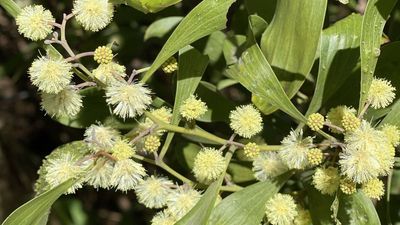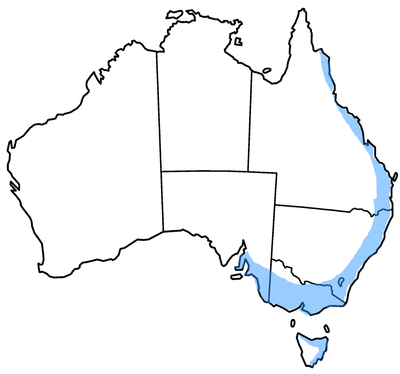


Acacia melanolxylon
Acacia
Indigenous Australian Native
Acacia melanoxylon, or Australian blackwood, is an Acacia species indigenous to south eastern Australia. The tree is one of the most wide ranging tree species in eastern Australia and is quite variable mostly in the size and shape of the phyllodes. The tree can grow to a height of around 20 m and has a trunk that can reach 150 cm in diameter. Like most species of Acacia it has phyllodes rather than true leaves. The glabrous (smooth), glossy, leathery, dark green to greyish-green phyllodes have a length of 4 to 16 cm and a width of 6 to 30 mm with a variable shape. They most often have a narrowly elliptic to lanceolate shape and are straight to slightly curved and often taper near the base and have three to five prominent longitudinal veins. In blooms between July and December producing inflorescences that appear in groups to two to eight on an axillary raceme, the spherical flower-heads have a diameter of 5 to 10 mm and contain 30 to 50 densely packed pale yellow to nearly white coloured flowers. Following flowering smooth, firmly papery and glabrous seed pods form. The curved or twisted or coiled pod have a biconvex shape with a length of 4 to 12 cm and a width of 5 to 8 mm and contain longitudinally arranged seeds.
Significance to the Ganai community.
Blackwood was known as YANUN OR YOMAN. The bark was used medicinally, with a decoction used for soaking joints as a treatment for rheumatism, and used to make fishing lines. The wood was used for boomerangs, shields and coolamons - with bent roots and branches favoured for boomerangs. Bark and twigs were used as a poison for fish.
5.00 Location A6
Latitude; -38.4012300000000 Longitude- 146.052293000000
5.01 Location Many specimens form part of the Tarwin River bank restoration plantings by the West Gippsland CMA in 2009/11

